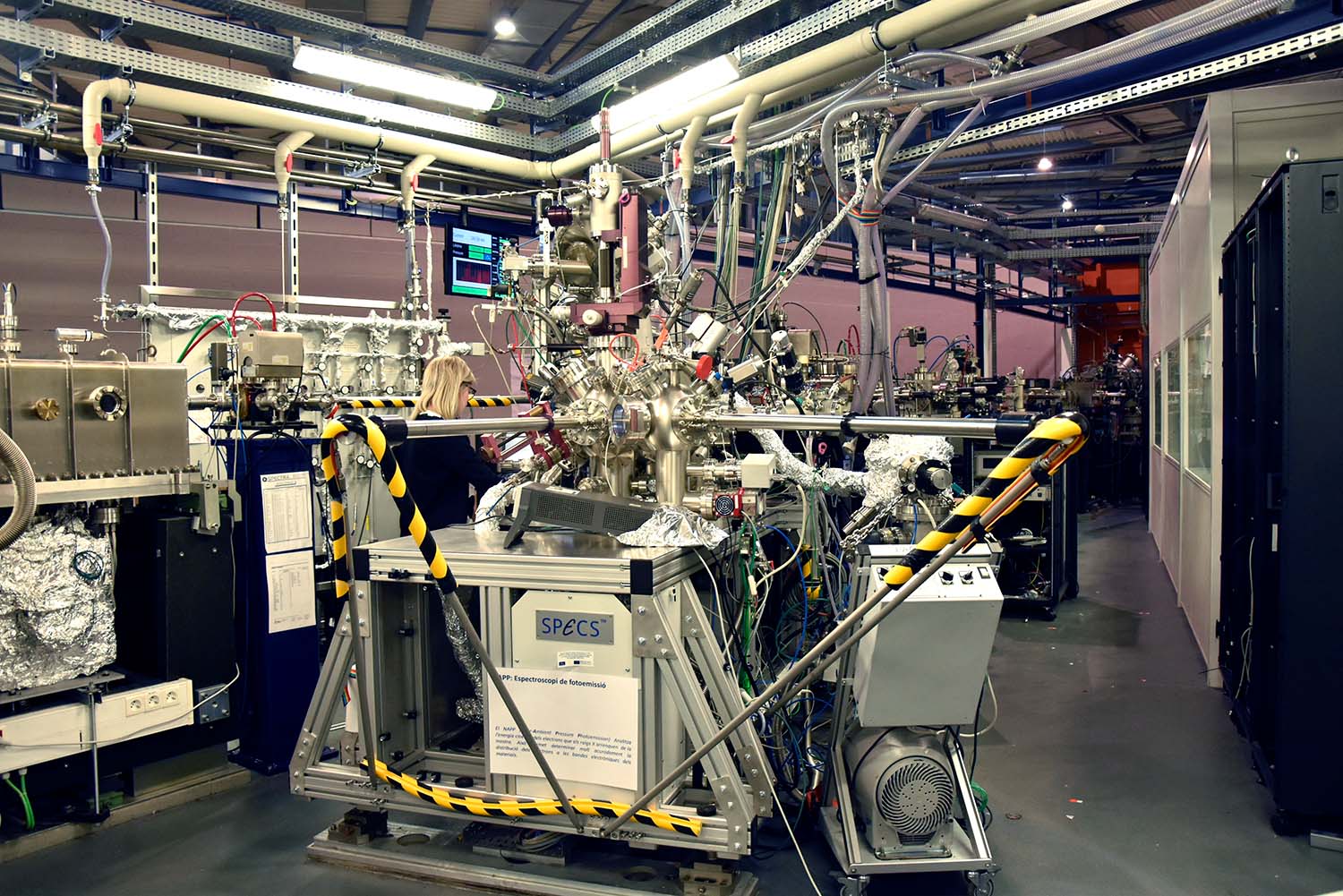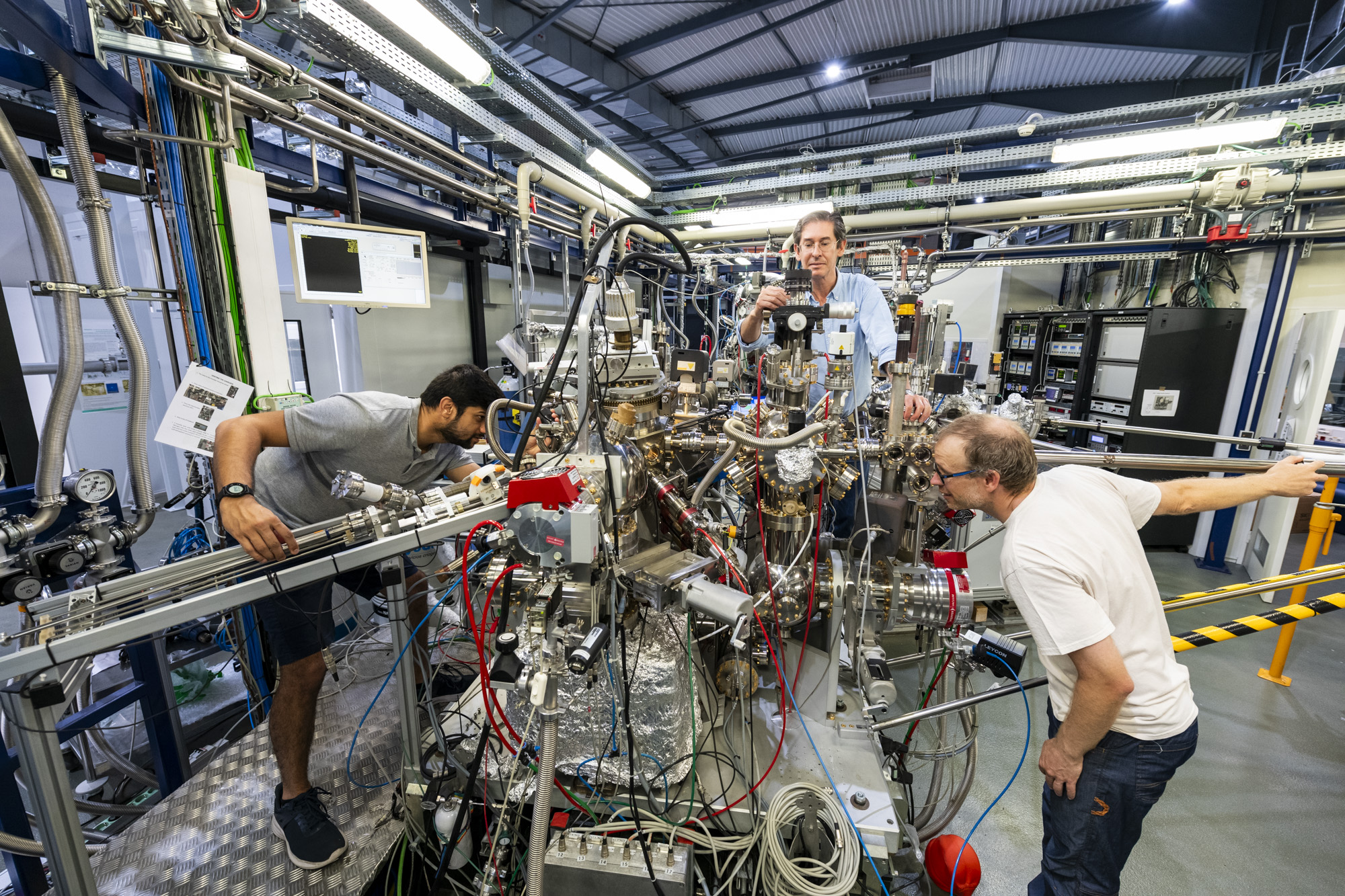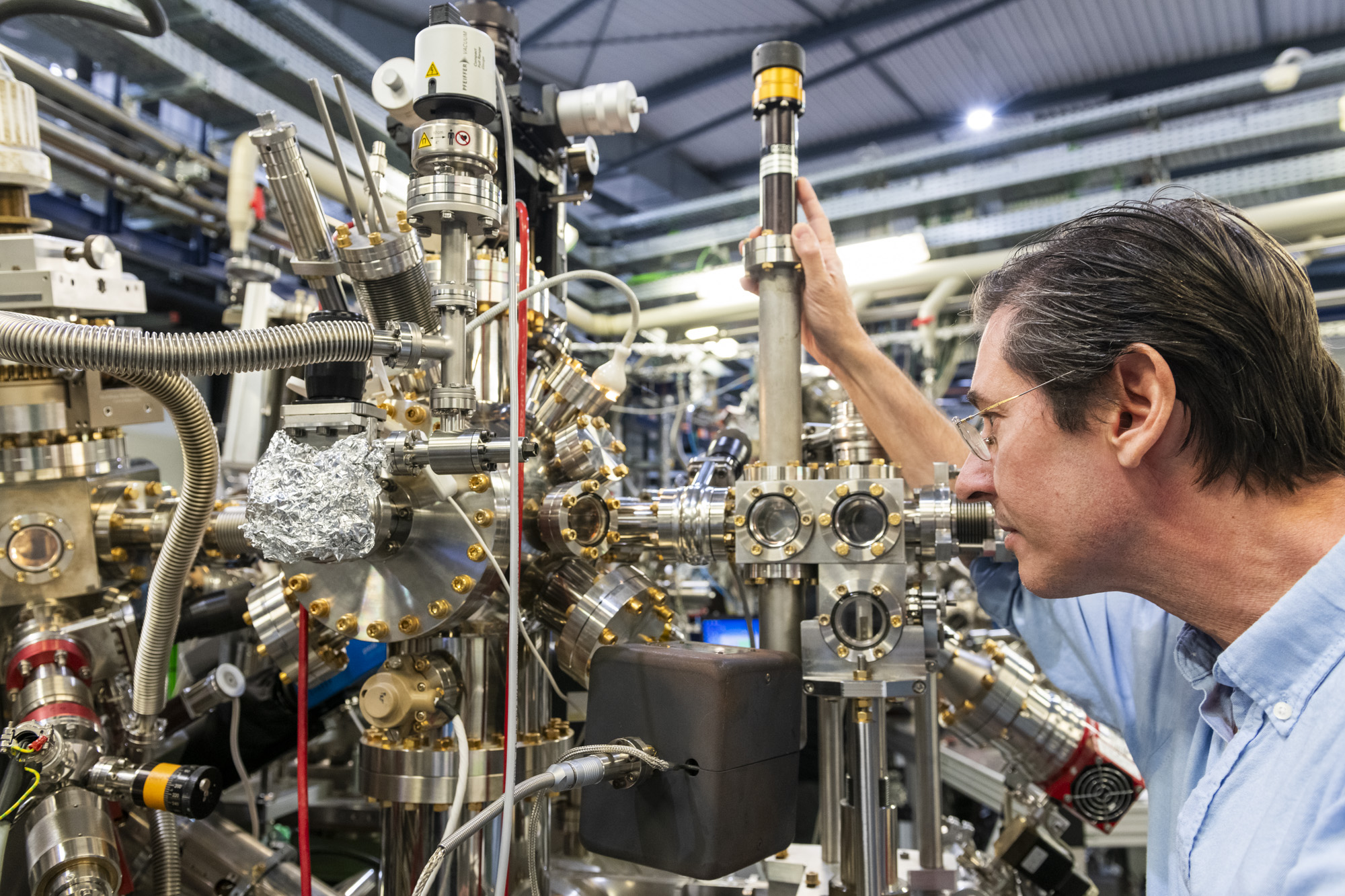The Near-Ambient Pressure Photoemission (NAPP) endstation is an Ultra High Vacuum (UHV) setup equipped with a hemispherical electron energy analyzer for X-ray Photoelectron Spectroscopy (Phoibos NAP150 from SPECS) that can operate at a sample pressure range from UHV up to 25 mbar thanks to a differential pumping system which ensures a pressure difference of 109 between detector and sample (A differentially pumped electrostatic lens system for photoemission studies in the millibar range). Therefore the usual characterization capabilities of XPS are extended to the study of gas-solid and gas-liquid interphases, with applications for "in-situ" characterization of heterogeneous catalysts, corrosion processes, wetting, fuel cells, photovoltaics, etc.
Near Edge X-ray absorption (NEXAFS or XAS) is also possible either in Total Electron Yield mode (measuring sample current) or in Auger mode using the electron energy analyzer. A UHV gas inlet system (Puregas from SPECS) for dosing pure gases or gas mixtures in the analysis chamber, with purity level better than ppb, will be operative in the second half of 2017. This system will allow dosing up to three different gases simultaneously with automatic flow and pressure control. Additionally, for finer dosing, three leak valve lines are also available in the analysis chamber.
A mass spectrometer is installed in the second stage of the differential pumping system of the analyzer, making it possible to simultaneously analyze the reaction gases during the experiments in order to confirm gas composition and investigate reaction products.
A motorized 5-axes manipulator allows the variation of sample polar and azimuth angles in the analysis chamber. The incident photon beam is deflected 3o downwards, making possible to measure with the sample in horizontal position; this is of interest in the case of powder samples. It is also possible to transfer samples in horizontal position all the way to the measuring position.
Regarding electron emission geometry, the analyzer axis is at 54.7o with respect to the incident beam (Magic Angle for both linear vertical and horizontal light polarizations). During data acquisition, the samples can be heated up to approx. 1000 K either by means of an infrared laser or by using a sample holder with an encapsulated filament. For experiments requiring cooling, there is an alternative manipulator that allows cooling the sample down to -23 ˚C by using a Peltier element.
The NAPP setup also includes a surface science preparation chamber currently equipped with ion sputtering gun, LEED and a flange for the installation of evaporators. A quartz balance will be available in 2017. Other ports are available for installing additional equipment brought by the users (sample cleaver, etc).


